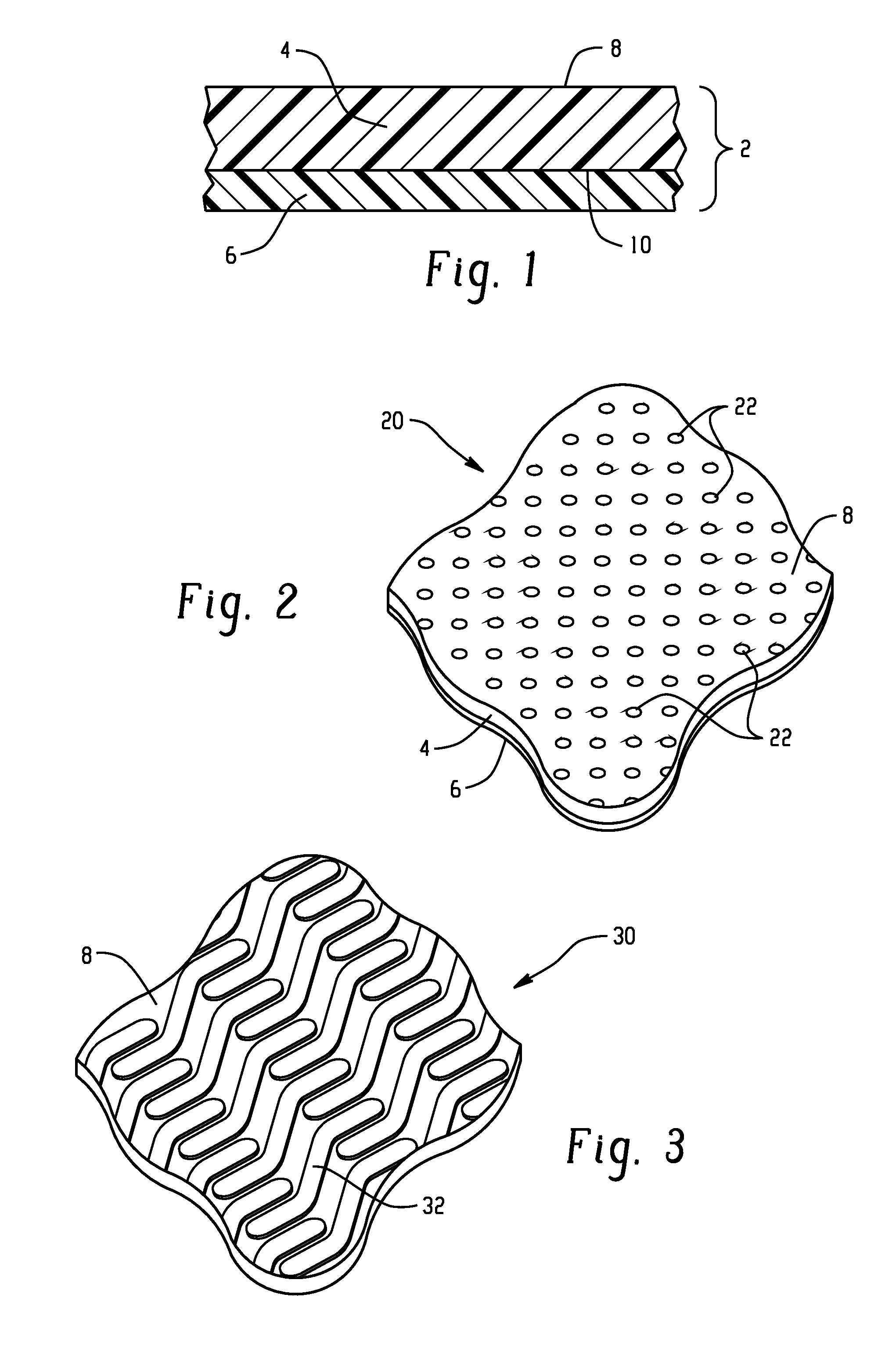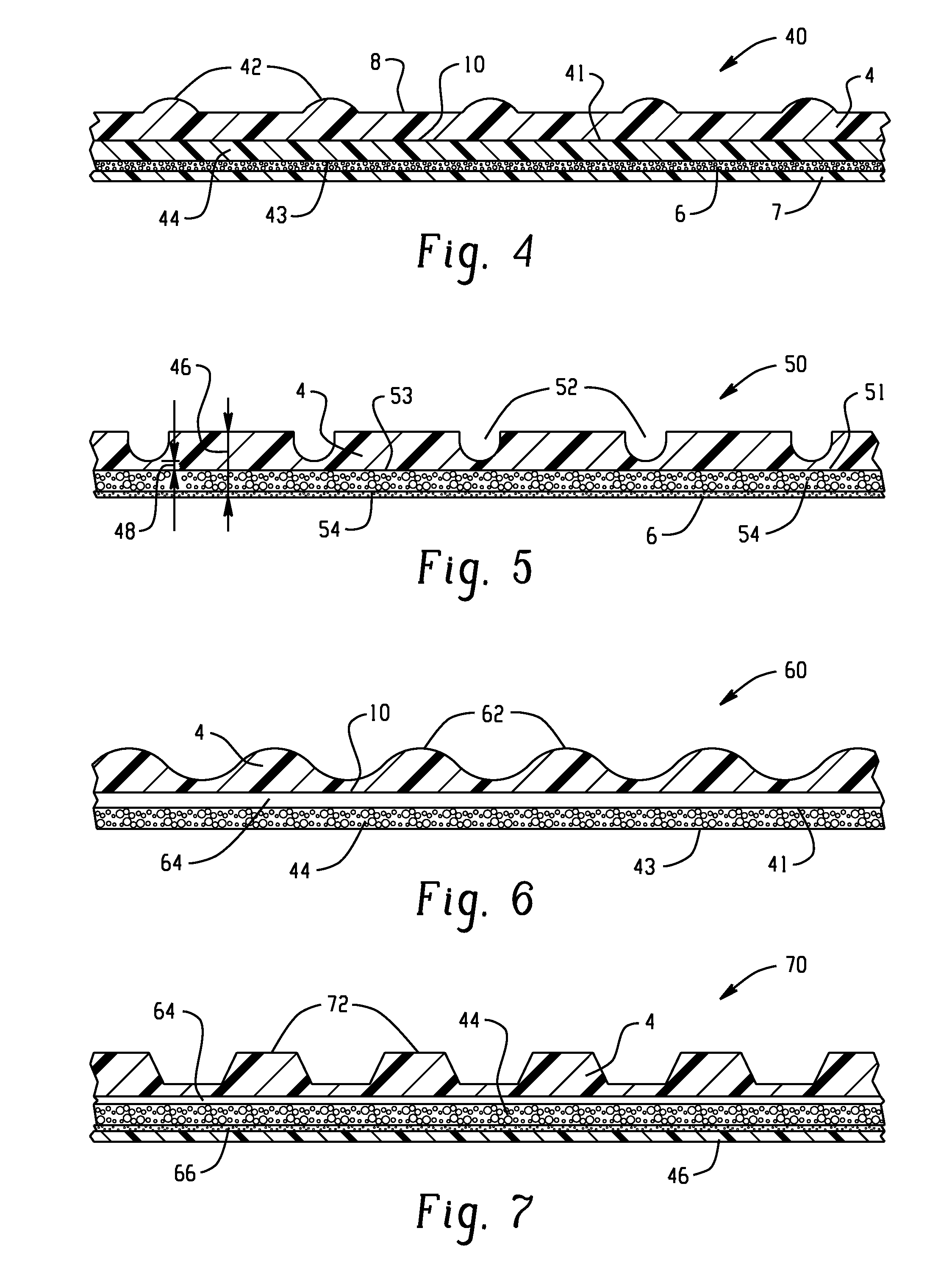Silicone compositions, methods of manufacture, and articles formed therefrom
a technology of silicone compositions and compositions, which is applied in the field of high-friction, cured silicone compositions, can solve the problems of difficult balance between, prone to tearing, adversely affecting the durability of the gripping surface, etc., and achieves enhanced adhesion and good gripping surface
- Summary
- Abstract
- Description
- Claims
- Application Information
AI Technical Summary
Benefits of technology
Problems solved by technology
Method used
Image
Examples
examples
[0153]The silicone layers were prepared by combining two commercially available two-part organopolysiloxane formulations as described below.
examples 1-3
[0154]Examples 1-3 were all formulated using a two-part organopolysiloxane formulation available under the trade name LIM 6040-D2, from GE Silicones Pittsfield, Mass., which produces a layer having a Shore A of 40 after cure. Example 1 was formulated by combining 65 wt. % of LIM 6040-D2 and 35 wt. % of a two-part organopolysiloxane formulation available under the trade name LIM 6010 from GE Silicones (which produces a layer having a Shore A of hardness of 30 after cure). Example 2 was formulated by combining 65 wt. % of LIM 6040-D2 with 35 wt. % of a two-part organopolysiloxane formulation available under the trade name 3-4241 Dielectric Tough Gel from Dow Corning (Viscosity=430 cP; Shore OO=60 (after cure)). Example 3 was prepared using 65 wt. % LIM 6040-D2 and 35 wt. % of a two-part organopolysiloxane formulation containing reactive epoxy groups available under the trade name 3-4237 Dielectric Firm Gel from Dow Corning (Viscosity=290 cP; Shore OO=30 after cure).
[0155]The component...
example 4-6
[0159]The following formulations were tested for peel strength as described above, and are reported in pounds per inch (ppi) in Table 2.
TABLE 2Polysiloxane,weight ratioSilicone GripLIMThickness,Hardness,Peel strength,6040Gel 3-4237mil (um)Shore AppiExample 4782232 (813)274.6Example 5722831 (787)244.4Example 6653530 (762)193.3
[0160]The above examples show that a range of ratios of the two primary formulation components can be used to produce silicone elastomers with acceptable bond to PET.
PUM
| Property | Measurement | Unit |
|---|---|---|
| Thickness | aaaaa | aaaaa |
| Mass | aaaaa | aaaaa |
| Length | aaaaa | aaaaa |
Abstract
Description
Claims
Application Information
 Login to View More
Login to View More - R&D
- Intellectual Property
- Life Sciences
- Materials
- Tech Scout
- Unparalleled Data Quality
- Higher Quality Content
- 60% Fewer Hallucinations
Browse by: Latest US Patents, China's latest patents, Technical Efficacy Thesaurus, Application Domain, Technology Topic, Popular Technical Reports.
© 2025 PatSnap. All rights reserved.Legal|Privacy policy|Modern Slavery Act Transparency Statement|Sitemap|About US| Contact US: help@patsnap.com



